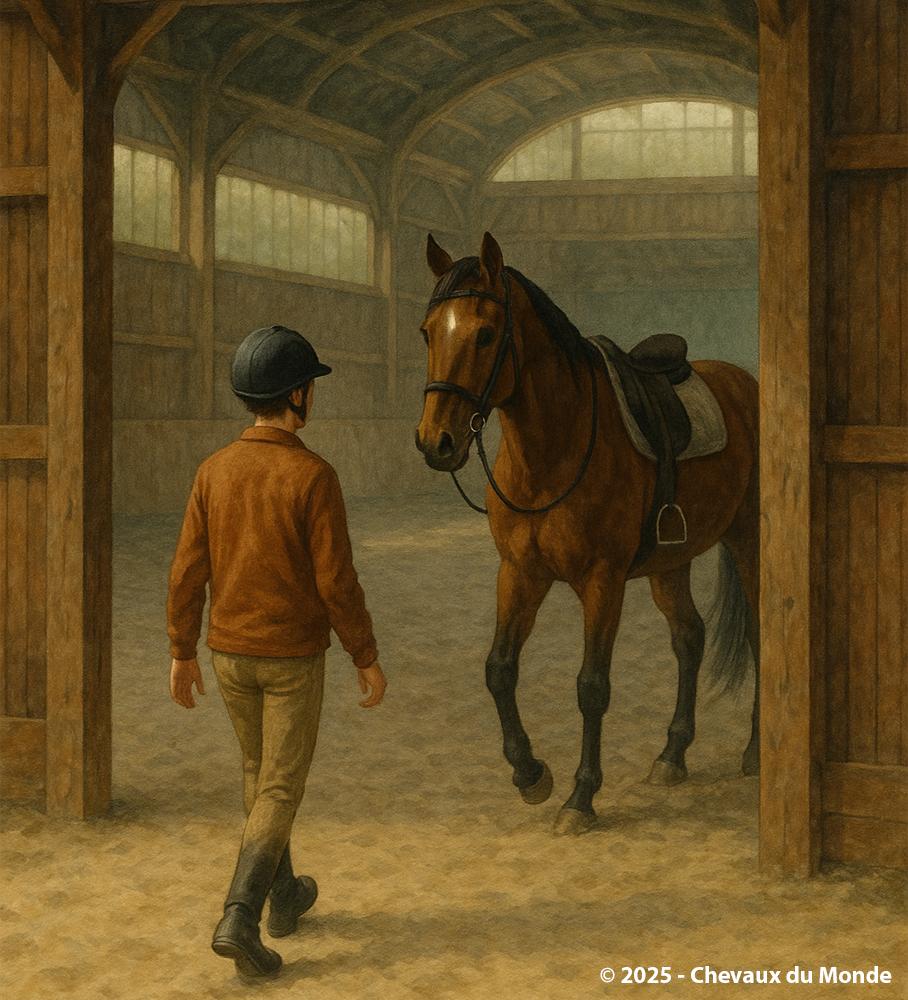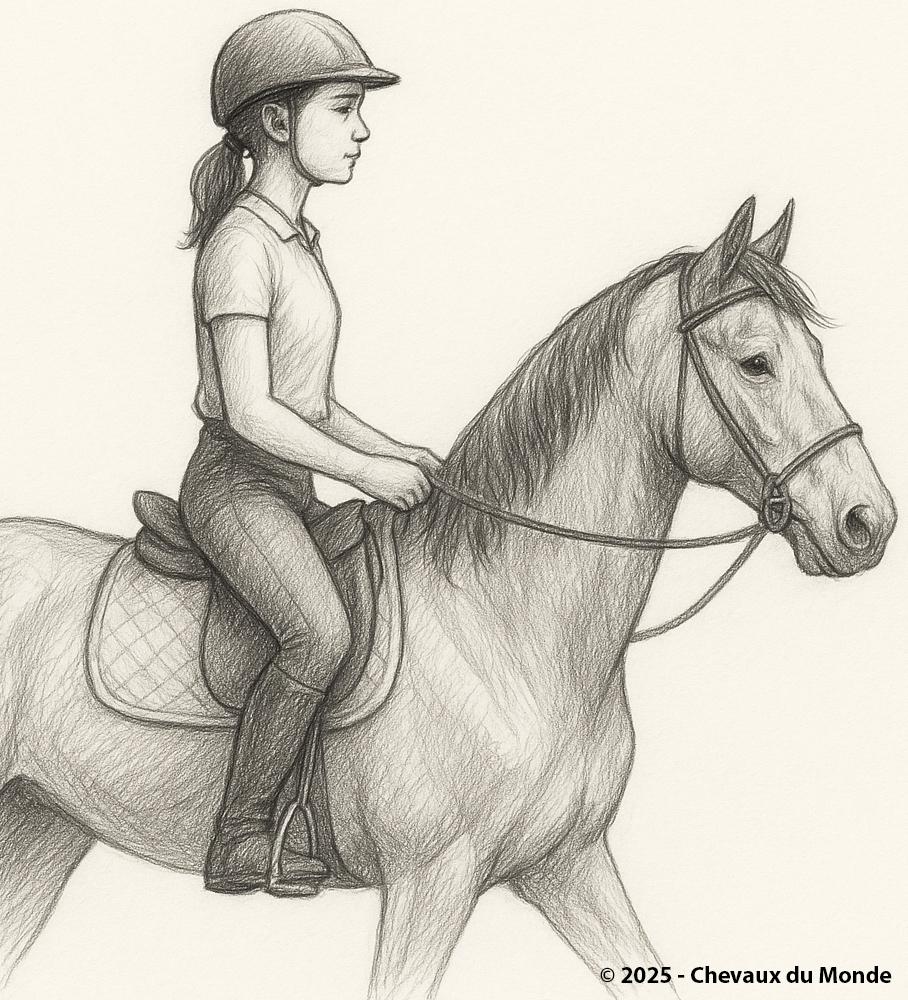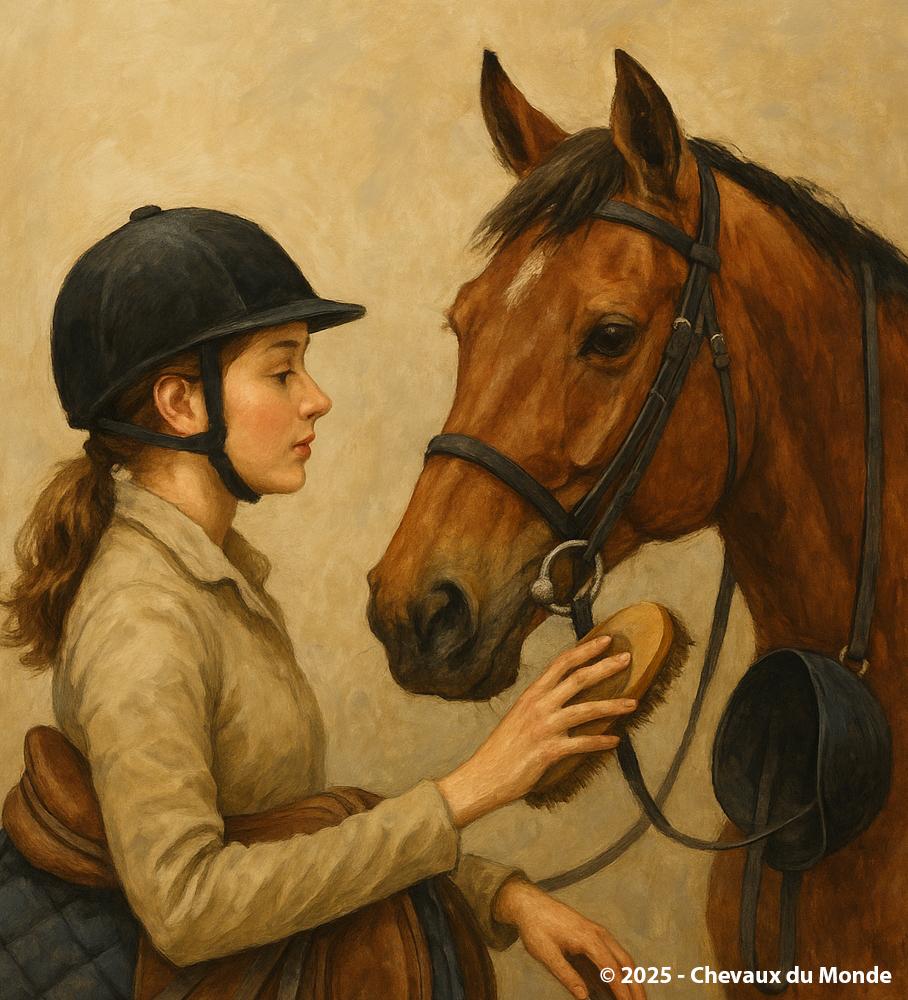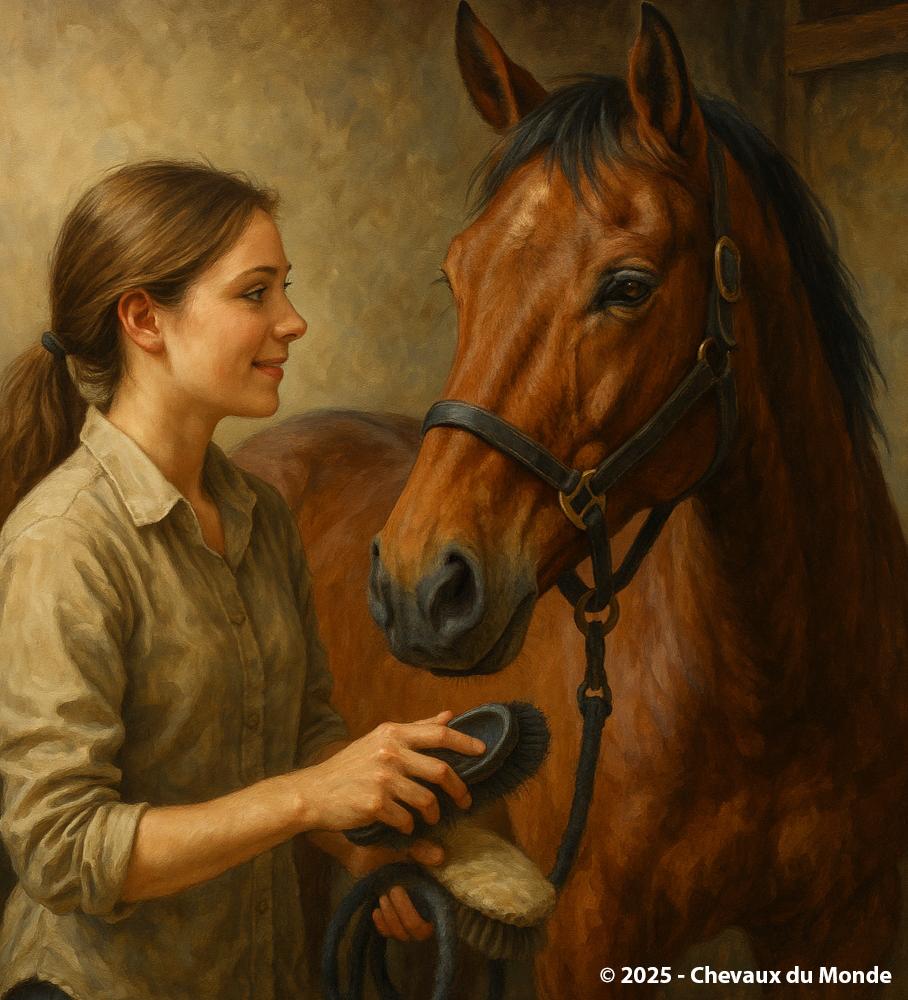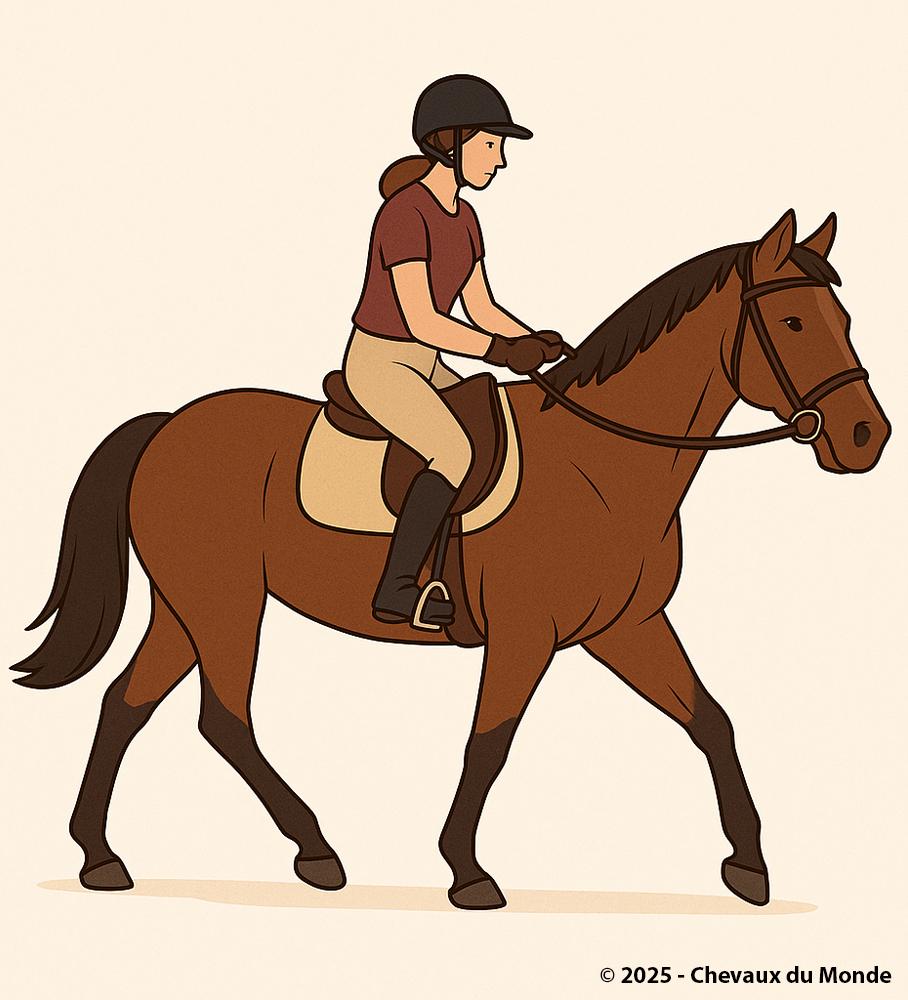THE 5 FIRST THINGS TO LEARN ON HORSEBACK: THE BASICS FOR BEGINNERS
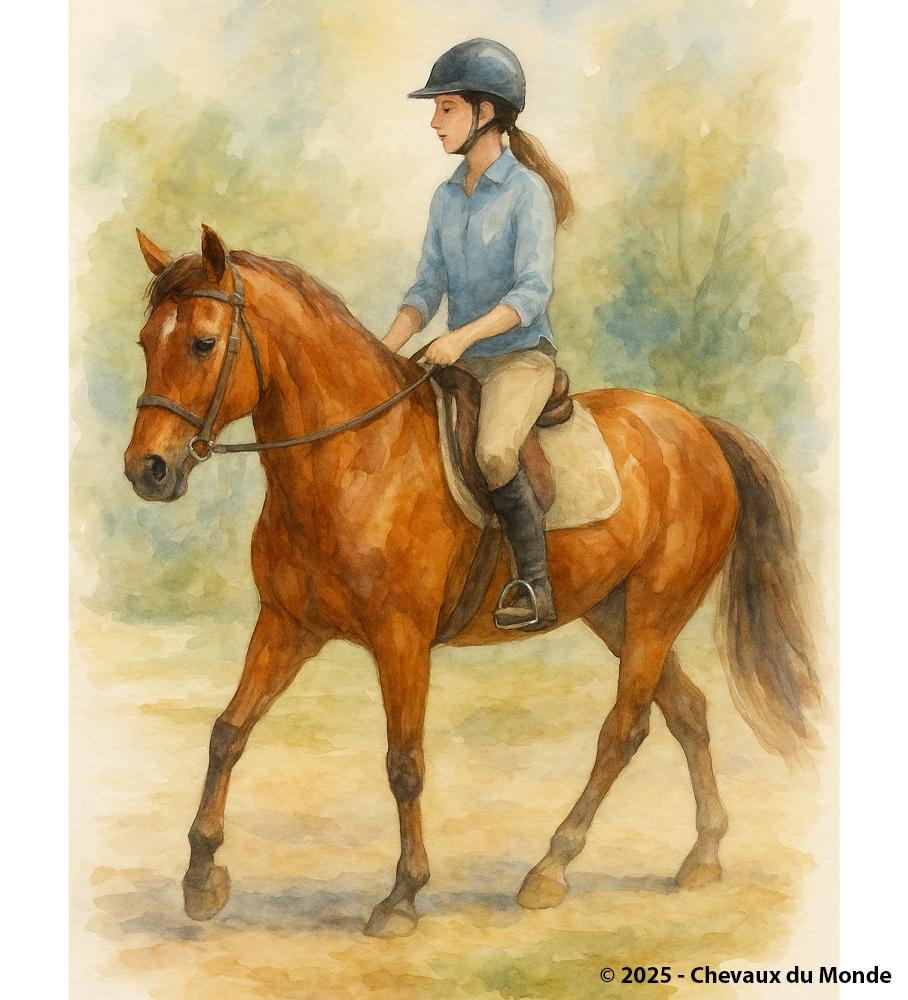
First steps on horseback: learning to sit correctly and guide the horse gently is the foundation of confident riding.
Discovering horseback riding is a unique experience, combining sport, animal companionship, and technical learning. But before galloping freely in an arena or along a trail, every beginner rider must master some essential fundamentals. These basic notions ensure safety, the horse’s comfort, and the rider’s progress.
This article presents the 5 first skills every rider should learn: balance, use of the reins, the walk, the trot, and the halt.
1. Balance: the foundation of all riding
1.1. Understanding your position
- The rider should sit straight but relaxed, with shoulders aligned with hips and heels.
- The gaze is directed forward, never at the horse’s mane, to anticipate movements.
- Legs hang naturally, with heels slightly down to stabilize the seat.
1.2. The importance of the seat
- The seat refers to how the rider uses their pelvis to follow the horse’s movements.
- A flexible, mobile seat allows the rider to move with the horse without interfering.
Remember: “A good rider is, above all, a rider in balance.”
2. The reins: communication through the hands
2.1. Holding the reins correctly
- Reins are held between the fingers, with thumbs on top.
- Wrists stay straight, without pulling backward.
- The contact should be soft yet steady, never stiff.
2.2. Learning to act with finesse
- Hands serve to indicate direction or regulate the pace, not to control by force.
- Riders aim for elastic contact, as if an invisible thread connected the hand to the horse’s mouth.
3. The walk: the first gait
3.1. Characteristics of the walk
- The walk is a natural, slow, four-beat gait.
- It allows beginners to find their position and discover the first riding sensations.
3.2. Practical exercises
- Walk straight lines and circles to learn basic steering.
- Alternate between active and slower walk to feel the effect of seat and reins.
4. The trot: learning to follow the movement
4.1. Rising trot
- The trot is a two-beat gait, bumpier than the walk.
- Beginners start with the rising trot, standing up and sitting down in rhythm at each stride.
- This helps to relieve the horse’s back and improves rider balance.
4.2. Sitting trot (later on)
- More difficult, it requires a strong, supple seat to stay in the saddle without bouncing.
- It is introduced only after achieving stability at the rising trot.
5. The halt: stopping safely
5.1. The aids for the halt
- The halt is asked by straightening the seat, stopping the legs’ action, and closing the fingers gently on the reins.
- The rider should breathe and relax, since tension makes halting harder.
5.2. Remaining still and calm
- At the halt, the horse should remain straight and immobile.
- The rider should reward with a pat, associating halting with a positive experience.
Conclusion
Learning to ride a horse is not just about going forward or turning: it is a progressive process, where each step builds upon the previous one.
The five basics balance, reins, walk, trot, halt are the indispensable foundation for riding safely and building a trusting relationship with the horse.
“A rider who masters the basics opens the door to every equestrian discipline.”

